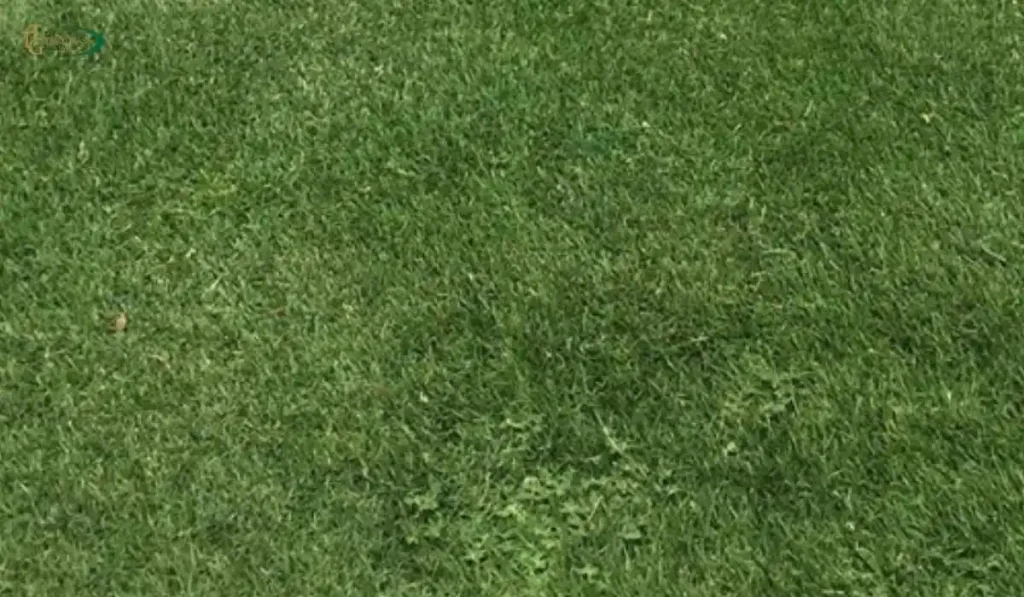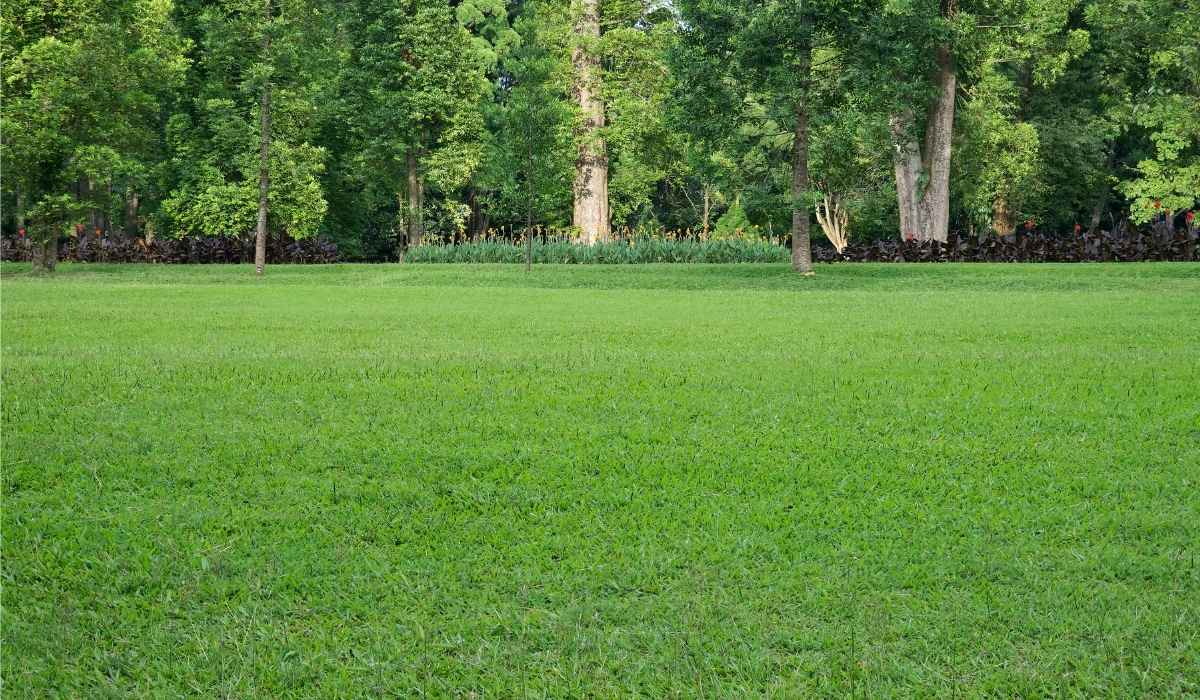
When it comes to selecting the perfect turf for your lawn, two of the most sought-after warm-season grasses are Zeon Zoysia® and Emerald Zoysia®.
Both offer exceptional beauty, durability, and low-maintenance qualities, making them popular among homeowners and landscape professionals alike.
However, the debate of Zeon Zoysia® vs Emerald Zoysia® often arises when choosing the best fit for your climate, lawn care routine, and aesthetic preferences.
In this article, we’ll compare the key differences between Zeon and Emerald Zoysia® in terms of appearance, maintenance needs, drought tolerance, shade tolerance, pest resistance, and overall performance.
A Quick Overview of Zoysia® Grass
Zoysia® grass, originally native to Asia, is a popular turfgrass in the southern United States due to its heat tolerance and ability to grow in a variety of soil types.
It forms a dense carpet of lush greenery that crowds out weeds and tolerates moderate foot traffic.
Zeon and Emerald are both hybrid cultivars of Zoysia® grass but differ in their characteristics and growing requirements.
Appearance and Texture
Zeon Zoysia®
Zeon Zoysia® grass is prized for its fine-bladed, soft texture and vibrant green color.
It has a luxurious feel underfoot and provides a manicured, upscale appearance to any lawn or golf course.
The blades are finer than most other Zoysia® varieties and are often compared to Bermuda grass in look and feel but with less invasiveness.
Emerald Zoysia®
Emerald Zoysia® is aptly named for its rich emerald-green hue.
It features a fine texture similar to Zeon but tends to have a slightly darker green coloration.
The blades are narrow and pointed, and the grass grows in a dense, carpet-like fashion.
While both types are attractive, Emerald Zoysia® has long been favored for its formal appearance.
✅ Winner: Tie – Both varieties offer striking aesthetic appeal, and the choice may come down to personal preference for color tone or blade softness.
Shade Tolerance
One of the most important factors to consider in the Zeon Zoysia® vs. Emerald Zoysia® debate is how well each type performs in the shade.
Zeon Zoysia®
Zeon is one of the most shade-tolerant Zoysia® grasses available.
It can thrive in areas that receive as little as 3–4 hours of sunlight daily, making it ideal for lawns with partial shade, under tree canopies, or yards with varying sunlight exposure.
Emerald Zoysia®
Emerald Zoysia® also has good shade tolerance but typically requires 4–5 hours of sun to maintain optimal health.
While it’s suitable for partially shaded areas, it may not perform quite as well as Zeon in denser shade.
✅ Winner: Zeon Zoysia® – Its superior shade tolerance makes it more versatile in low-light environments.
Drought Resistance and Water Needs
Water conservation is a priority for many homeowners, especially in drought-prone areas.
Zeon Zoysia®
Zeon Zoysia® is excellently resistant to drought and can survive extended dry periods.
Once established, it requires minimal irrigation and retains its color longer than many other turfgrasses during drought.
Emerald Zoysia®
Emerald Zoysia® also has moderate drought resistance, but it tends to require slightly more water to maintain its vibrant color during prolonged dry spells.
✅ Winner: Zeon Zoysia® – Its better drought resilience can reduce water usage and utility costs.
Cold Tolerance and Dormancy
While Zoysia® grasses are generally warm-season types, their performance during colder months is still relevant, depending on your region.
Zeon Zoysia®
Zeon Zoysia® has moderate cold tolerance.
It may enter dormancy and turn brown in colder climates, but it bounces back quickly in spring. It’s suitable for USDA zones 6–9.
Emerald Zoysia®
Emerald Zoysia® has a slightly higher cold tolerance and retains its green color a bit longer into fall.
However, like Zeon, it will go dormant in colder temperatures and turn brown during winter.
✅ Winner: Emerald Zoysia® – A slight edge in astonishing weather performance, especially in borderline zones.
Maintenance Requirements
When considering Zeon Zoysia® vs Emerald Zoysia®, lawn care routines are another major deciding factor.
Zeon Zoysia®
Zeon is often referred to as a “low-maintenance” grass.
It grows slower than other grasses, meaning fewer mowing sessions.
It also requires less nitrogen, reducing the need for frequent fertilization.
Zeon also has a stronger resistance to thatch buildup.
Emerald Zoysia®
Emerald Zoysia® demands a bit more attention.
It grows faster and can be prone to thatch if not correctly maintained.
It also requires more frequent mowing and careful irrigation management to avoid fungal issues.
✅ Winner: Zeon Zoysia® – Lower maintenance needs and less susceptibility to thatch make it more user-friendly.
Wear Tolerance and Recovery

Lawns subjected to foot traffic, pets, or children need to bounce back quickly from wear and tear.
Zeon Zoysia®
Zeon performs well under moderate foot traffic and has an above-average recovery rate.
Its dense growth helps protect the soil and reduce compaction.
Emerald Zoysia®
Emerald Zoysia® also handles foot traffic reasonably well but tends to recover more slowly from damage due to its slower lateral growth.
✅ Winner: Zeon Zoysia® – Faster recovery and dense growth make it better suited for active lawns.
Pest and Disease Resistance
Pests and fungal diseases can ruin the aesthetics and health of any lawn if not addressed.
Zeon Zoysia®
Zeon is more resistant to many common turfgrass diseases and pests, including brown patch and chinch bugs.
Its dense growth also helps reduce weed intrusion.
Emerald Zoysia®
Emerald Zoysia® is slightly more prone to fungal diseases, especially in overly moist conditions or shaded areas.
It requires vigilant care to avoid overwatering and thatch buildup.
✅ Winner: Zeon Zoysia® – Stronger natural resistance means fewer chemicals and interventions are required.
Cost and Availability
Cost may play a role in deciding which grass to choose, especially for large-scale lawn installations.
Zeon Zoysia®
Zeon Zoysia® sod tends to be more expensive than Emerald due to its high demand, proprietary growing licenses, and exceptional features.
However, the long-term savings on maintenance and water can offset initial costs.
Emerald Zoysia®
Emerald Zoysia® is often more affordable and widely available in many southern states. It’s a traditional favorite that has stood the test of time.
✅ Winner: Emerald Zoysia® – More budget-friendly for upfront costs.
Final Verdict: Zeon Zoysia® vs Emerald Zoysia® – Which One Reigns Supreme?
So, Zeon Zoysia® vs Emerald Zoysia® — which should you choose? Both grasses are excellent choices for a lush, green lawn, but your decision should be based on your specific conditions and preferences.
- Choose Zeon Zoysia® if you want a low-maintenance, shade-tolerant, drought-resistant, and disease-hardy lawn that maintains a fine, soft texture with minimal upkeep.
- Opt for Emerald Zoysia® if you’re looking for a classic, dark green lawn, are okay with a bit more maintenance, and want a cost-effective option with a refined look.
Ultimately, Zeon Zoysia® slightly edges out Emerald Zoysia® as the winner due to its versatility, lower maintenance, and better adaptability to varying light and water conditions.
However, for those seeking a more traditional and cost-friendly turf, Emerald Zoysia® is still a worthy contender.
And if you’re looking for a professional Zoysia grass installer, The Turfgrass Group will provide you with the best service to get your lawn looking its absolute finest.
Ready to Choose Your Turf?
Whether you’re revamping your backyard or laying fresh sod for a new home, choosing between Zeon Zoysia® vs Emerald Zoysia® will significantly impact the health, appearance, and maintenance of your lawn.
Take into consideration your region’s climate, lawn usage, and sunlight availability—and don’t hesitate to consult a local turf expert for tailored advice!
FAQ’s
What is the main difference between Zeon Zoysia® and Emerald Zoysia®?
The primary difference lies in their shade tolerance, maintenance needs, and overall resilience. Zeon Zoysia® is more shade-tolerant, requires less maintenance, and has better drought and disease resistance. Emerald Zoysia®, on the other hand, offers a darker green color and slightly finer texture but may need more care in shaded or moist conditions.
Which grass performs better in shady areas—Zeon or Emerald Zoysia®?
When compared to Emerald Zoysia®, Zeon clearly outperforms in shade tolerance. It can thrive with as little as 3–4 hours of sunlight daily, making it a better choice for partially shaded or tree-covered lawns.
Is Zeon Zoysia® or Emerald Zoysia® easier to maintain?
Zeon Zoysia® is generally easier to maintain. It grows slower, requires less mowing, and is more resistant to thatch and pests. Emerald Zoysia® can demand more regular mowing and may require closer monitoring for fungal diseases.
Which one is better for drought-prone areas?
Zeon Zoysia® is the better choice for drought conditions. It retains moisture longer and stays green with less frequent watering. While Emerald Zoysia® also tolerates dry weather, it may require more irrigation to keep its rich color during prolonged dry spells.
How do Zeon Zoysia® and Emerald Zoysia® compare in terms of cost?
In the Zeon Zoysia® vs Emerald Zoysia® comparison, Emerald Zoysia® typically has a lower upfront cost and is more readily available. Zeon Zoysia®, while more expensive initially, may save you money in the long run due to its lower water and maintenance needs.
Can Zeon and Emerald Zoysia® handle foot traffic?
Yes, both types can handle moderate foot traffic, but Zeon Zoysia® tends to recover faster from wear and tear. Its dense growth habit also helps reduce soil compaction and weed growth.
Which variety is more disease-resistant?
Zeon Zoysia® is more resistant to common lawn diseases such as brown patches and large patches. Its dense canopy and lower thatch buildup reduce vulnerability to fungal outbreaks compared to Emerald Zoysia®.
What regions are best suited for Zeon and Emerald Zoysia®?
Both grasses thrive in USDA zones 6–9, but Zeon Zoysia® adapts slightly better to varying light conditions, making it ideal for a broader range of climates. Emerald Zoysia® performs best in consistently sunny, warm areas.